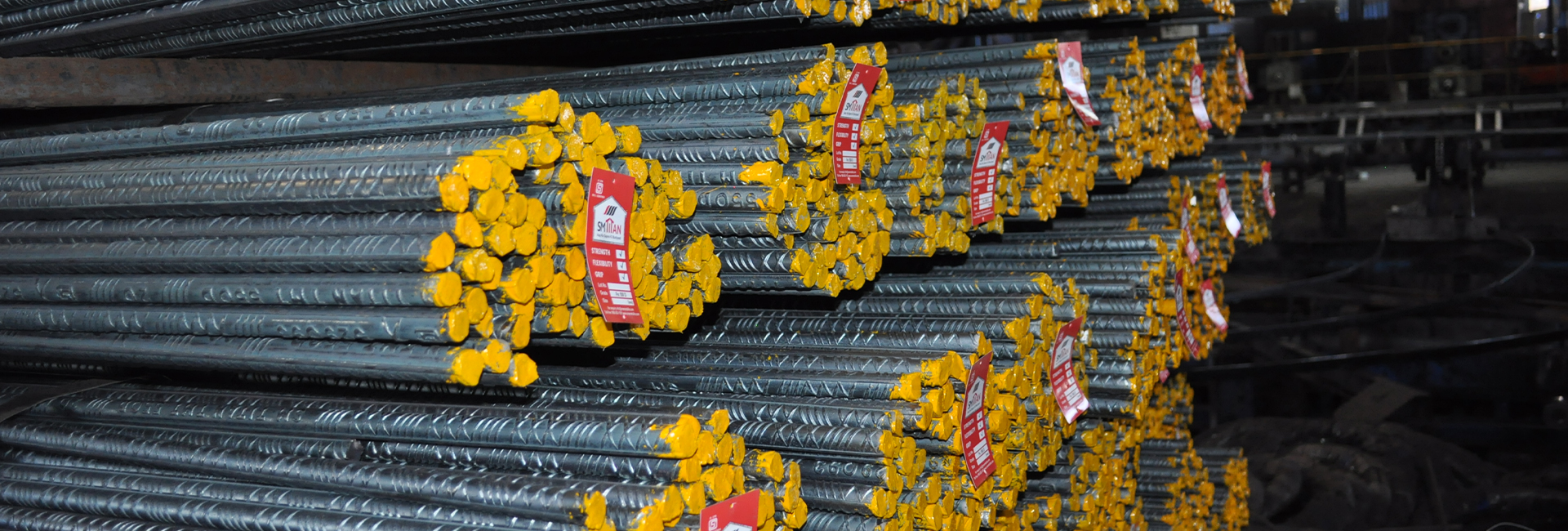In modern construction, Thermo-Mechanically Treated (TMT) bars have become an integral component in reinforcing concrete structures. Their unique properties make them particularly crucial in the construction of structural columns, which are essential for supporting the loads and ensuring the stability of buildings and other structures. This essay explores the importance of TMT bars in structural columns, highlighting their role in enhancing strength, durability, safety, and overall construction efficiency.
|
Table of Content
|
Understanding Structural Columns
Structural columns are vertical elements designed to support the weight of a building and transfer loads from the roof and upper floors to the foundation. They are critical in maintaining the structural integrity and stability of buildings, especially in high-rise constructions. Columns must withstand various forces, including compression, bending, and shear, making the choice of materials for their reinforcement crucial.
What Are TMT Bars?
TMT bars are high-strength reinforcement bars produced through a thermo-mechanical treatment process. This process involves rapid cooling of the bars' surface after they are heated, resulting in a tough outer layer and a softer core. This dual structure gives TMT bars their characteristic strength, ductility, and resistance to corrosion, making them ideal for use in construction.
The Role of TMT Bars in Structural Columns
1. Strength and Load-Bearing Capacity
One of the primary reasons TMT bars are indispensable in structural columns is their high strength. The thermo-mechanical treatment process enhances the tensile strength of TMT bars, allowing them to bear substantial loads. In structural columns, this strength is crucial for supporting the weight of the entire building and resisting external forces such as wind and seismic activities.
The high tensile strength of TMT bars ensures that the columns can handle the compressive loads without buckling or failing, which is especially important in tall buildings and structures subjected to heavy loads. This strength also allows for the design of slimmer columns, which can save space and reduce material costs without compromising safety.
2. Ductility and Flexibility
Ductility refers to the ability of a material to deform without breaking, and it is a vital property for materials used in structural columns. TMT bars possess excellent ductility, which allows them to absorb and dissipate energy under stress, such as during an earthquake. This property is essential for ensuring the safety and resilience of buildings in seismic zones.
The flexibility of TMT bars also contributes to their effectiveness in structural columns. Unlike traditional reinforcement bars, TMT bars can bend and stretch under pressure, which helps to distribute the load more evenly throughout the column. This flexibility reduces the risk of sudden structural failure, enhancing the overall safety and durability of the building.
3. Corrosion Resistance
Corrosion is a significant concern in the construction industry, particularly in coastal areas or regions with high humidity. Corrosion of reinforcement bars can weaken the structural integrity of columns, leading to costly repairs and potential safety hazards. TMT bars are highly resistant to corrosion due to their unique manufacturing process, which forms a protective layer on the surface of the bars.
This corrosion resistance extends the lifespan of structural columns, ensuring that they remain strong and reliable over time. It also reduces maintenance costs and the need for frequent repairs, making TMT bars a cost-effective choice for long-term construction projects.
4. Thermal Resistance
TMT bars offer excellent thermal resistance, which is another critical factor in their use in structural columns. During a fire, building materials can expand and contract due to temperature changes, potentially leading to structural damage. TMT bars maintain their strength and stability at high temperatures, reducing the risk of structural failure during a fire.
This thermal resistance also ensures that the columns can withstand the effects of temperature fluctuations over time, further enhancing the durability and safety of the building.
5. Ease of Use and Construction Efficiency
TMT bars are not only strong and durable but also easy to work with, which contributes to construction efficiency. They are available in various sizes and lengths, making them suitable for different types of structural columns. The flexibility of TMT bars allows them to be easily bent and shaped on-site, facilitating quicker installation and reducing labor costs.
The uniformity and consistency of TMT bars also ensure that they provide reliable reinforcement throughout the column, eliminating weak points that could compromise structural integrity. This ease of use and reliability make TMT bars a preferred choice for contractors and engineers in construction projects.
Also Read: How Cement and TMT Bars Essential for Strong Building Foundations
Environmental and Economic Considerations
The use of TMT bars in structural columns also has positive environmental and economic implications. The production of TMT bars is more energy-efficient compared to traditional reinforcement bars, resulting in lower CO2 emissions. Additionally, the strength and durability of TMT bars reduce the need for excessive use of materials like concrete, further minimizing the environmental impact.
Economically, TMT bars offer long-term savings by reducing maintenance and repair costs due to their corrosion resistance and durability. Their strength allows for the construction of slender columns, which can reduce the overall cost of materials and construction. These factors make TMT bars not only a sustainable choice but also a cost-effective one.
Case Studies and Applications
Numerous projects across India and the world have successfully utilized TMT bars in structural columns, demonstrating their effectiveness. For example, in high-rise buildings in seismic zones, TMT bars have proven invaluable in enhancing earthquake resistance and ensuring the safety of occupants. Similarly, in coastal areas, the use of corrosion-resistant TMT bars has significantly reduced maintenance issues and prolonged the lifespan of buildings.
These case studies highlight the versatility and reliability of TMT bars in various construction scenarios, underscoring their importance in modern architecture and engineering.
Also Read:- Exploring the Different Types of Beams: The Backbone of Structural Design
Sree Metaliks TMT bars
TMT bars are a critical component in the construction of structural columns, offering unmatched strength, ductility, corrosion resistance, and thermal stability. Their use enhances the load-bearing capacity and durability of columns, ensuring the safety and longevity of buildings. The environmental and economic benefits further solidify their importance in contemporary construction practices.
As the construction industry continues to evolve, the demand for materials that combine strength, sustainability, and efficiency will grow. TMT bars, with their proven track record and versatile applications, will continue to play a vital role in shaping the future of construction. By integrating TMT bars into structural columns, builders and engineers can achieve safer, more durable, and environmentally friendly structures, meeting the demands of modern society.
The advanced manufacturing process of Sree Metaliks' TMT bars results in a tough exterior and flexible core, making them ideal for high-rise and critical infrastructure projects. With their exceptional quality and performance, Sree Metaliks' TMT bars are a reliable choice for enhancing the integrity of structural columns in construction.
For more information, please reach out to us at: Sales@sreemetaliks.com

